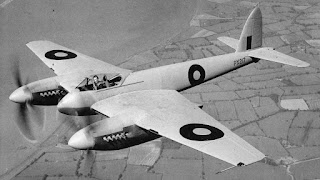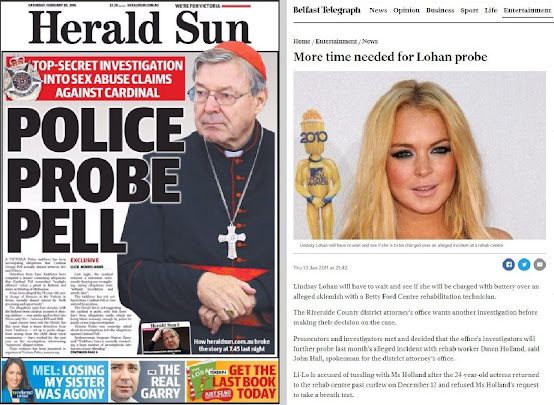Swirl (pronounced swurl)
(1) A twist, as of hair around the head or of trimming on
a hat; a whorl or curl.
(2) Any curving, twisting line, shape, or form.
(3) A descriptor of a state or confusion or disorder.
(4) A swirling movement; whirl; eddy; to turn or cause to
turn in a twisting spinning fashion (used especially of running water).
(5) In fishing, the upward rushing of a fish through the
water to take the bait.
(6) To move around or along with a whirling motion; a whirl;
an eddy.
(7) To feel dizzy or giddy (the idea of a “spinning head”).
(8) To cause to whirl; twist.
(9) To be arranged in a twist, spiral or whorl.
(10) Figuratively, to circulate, especially in a social
situation.
(11) In AAVE (African-American Vernacular English), to in
some way mingle interracially (dating, sex, marriage etc) (dated; now rare).
(12) In internal combustion engines (ICE), as “swirl
chamber”, a now generic term for a type of combustion chamber design.
1375-1425: From the late (northern) Middle English swirlen (to eddy, swirl) which was probably
from the Old Norse svirla (to swirl),
a frequentative form of Old Norse sverra
(to swing, twirl). It was cognate with the
Scots swirl & sworl (to eddy, swirl), the Norwegian
Nynorsk svirla (to whirl around; swirl),
the Swedish sorla (to murmur, buzz)
and the Dutch zwirrelen (to swirl). Related forms included the dialectal German schwirrlen (to totter), the West Frisian
swiere (to reel, whirl), the Dutch zwieren (to reel, swing around), the German
Low German swirren (to whizz, whirl
or buzz around), the German schwirren
(to whirr, whizz, buzz), the Swedish svirra
(to whirr about, buzz, hum), the Danish svirre
(to whizz, whirr) and the English swarm.
The construct may be understood as the Germanic root swir- + -l- (the frequentative suffix). Swirl is a noun & verb, swirled is a verb
& adjective, swirling is a noun, verb & adjective, swirly is a noun
& adjective, swirler is a noun and swirlingly is an adverb; the noun plural
is swirls.
In English, the late (northern) Middle English noun swirlen (to eddy, swirl) seems originally to have come from a Scottish word, the origin of which is undocumented but etymologists seem convinced of the Scandinavian links. The sense of a “whirling movement” emerged in the early nineteenth century although the meaning “a twist or convolution (in hair, the grain of wood etc)” was in use by 1786. The verb as a transitive in the sense of “give a swirling or eddying motion to” was in use in the early sixteenth century but it may by then long have been in oral use, one text from the fourteenth containing an example and the source of that may have been either Germanic (such as the Dutch zwirrelen (to swirl) or the Norwegian Nynorsk svirla (to whirl around; swirl) or it may have evolved from the English noun. The intransitive sense (have a whirling motion, form or whirl in eddies) dates from 1755. The adjective swirly existed by 1785 in the sense of “twisted or knotty” but by the middle of the next century it had come also to describe anything “whirling or eddying”, applied especially to anything aquatic. By 1912, it was used also to mean “full of contortions or twists” although “swirling” in this sense had by then been in (gradually increasing) use for a century.
Of curls & swirls: Lindsay Lohan with curls (left) and swirls (right).
In hairdressing, although customers sometimes use the
words “curl” and “swirl” interchangeably, to professionals the use should be
distinct. A swirl is a movement or pattern
in which hair is styled or arranged, typically with a rounded or circular
pattern and swirls can be natural (the pattern at the crown of the head where
the hair grows in a circular direction) or stylized (the look deliberately
created and most obvious in “up-dos) or the formal styles associated with
weddings and such). The end result is a
wide vista and the swirl is more a concept than something which exists within
defined parameters. A curl is (1) a type
of hair texture or (2) the act of creating a curl with techniques using tools
and/or product. Some people (and there’s
a strong ethnic (ie genetic) association) naturally have curly hair due to the
shape of their follicles and within the rubric of what used to be called the ulotrichous, hairdressers classify curls as tyree types: (1) tight (small, corkscrew-like
structures), (2) medium (tighter curls but with a softer appearance) and (3)
long spirals with a large diameter).
Some commercial product also lists “ringlets” as a type but as tight,
well-defined spirals, they’re really a descriptive variation of the tight or
medium. So, the essential difference is
that a swirl is a pattern or movement of the hair, while a curl describes texture
or shape and while a swirl is a matter or arrangement, a curl demands changing
the hair’s natural texture or shape. Swirls
are very much set-piece styles associated with formal events while curls are a popular
way to add volume, texture, and movement to the hair.
In internal combustion engines (ICE), the “swirl chamber
is a now generic term used to describe a widely-used type of combustion chamber
when upon introduction, the fuel-air mixture “swirls around” prior to
detonation. The design is not new, Buick’s
straight-8 “Fireball” cylinder head using a simple implementation as long ago
as the 1920s and it would serve the corporation into the 1950s. The critical aspect of the engineering was
the interaction between a receded exhaust valve and a rising in the top of the
piston which “pushed” most of the fuel-air mixture into what was a
comparatively small chamber, producing what was then called a “high-swirl”
effect, the “Fireball” moniker gained by virtue of the actual combustion “ball
of fire” being smaller in volume than was typical at the time. The benefit of the approach was two-fold: a
reduction in fuel consumption because less was required per power-stroke and
(2) a more consistent detonation of the poor quality fuel then in use. As fuel improved in quality and compression
ratios rose (two of the dominant trends of the post-war years), the attraction
of swirl chambers diminished but the other great trend was the the effective
reduction in the cost of gasoline (petrol) and as cars became larger & heavier
and roads more suited to higher speeds, the quest was for power.
Swirling around: The swirl process in a diesel combustion chamber.
Power in those years usually was gained by increased
displacement & combustion chamber designs optimized for flow; significantly
too, many popular designs of combustion chamber (most notably those in the
so-called “wedge” heads) were cheaper to produce and in those years, few gave
much thought to air-pollution. The cars
of the 1950s & 1960s had really toxic exhaust emissions. By the mid 1960s however, the problem of air
pollution in US cities was so obvious and the health effects were beginning to
be publicized, as was the contribution to all of this by motor vehicles. Regulations began to appear, California in
1961 (because of the high vehicle population and certain geographical &
climatic phenomena, Los Angeles & San Francisco were badly affected by air
pollution) passing the first statute and the manufacturers quickly agreed to
adopt this standard nationally, fearing other states might begin to impose more
onerous laws. Those however arrived by mid-decade
and although there was specific no road-map, few had any doubts the rules would
become stricter as the years passed. The
industry’s only consolation was that these laws would be federal legislation so
they would need to offer only one specification for the whole country (although
the time would come when California would decide things should be tougher and
by the 1970s there were “Californian cars” and “49 state cars”). K Street wasn’t the force then it later
became and the manufacturers conformed with (relatively) little protest.
Fuel was still cheap and plentiful but interest in swirl
chambers was revived by the promise of cleaner burning engines. Because it wasn’t new technology, the
research attracted little attention outside of the engineering community but in
1970, German-born Swiss engineer Michael May (b 1934) demonstrated a Ford (Cologne)
Capri with his take on the swirl chamber in a special cylinder head. In a nod to the Buick original, May nick-named
his head design the “Fireball” (professional courtesy a thing among
engineers). What Herr May had done was add
a small groove (essentially a channel surrounding the intake valve) to the
chamber, meaning during the last faction of a second of piston movement, the
already swirling fuel-air mixture got a final nudge in the right direction:
instead of there being a randomness to the turbulence of the mix, the shape was
controlled and was thus able to be lower in volume (a smaller fireball) and
precisely controlled at the point at which the spark triggered detonation; May
called this a “higher swirl”. Not only
did this reduce exhaust emissions but it also cut fuel consumption for a given
state of tune so designers could choose their desired path: more power for the
same fuel consumption or the same power for less and within a short time, just
about the whole world was taking great interest in fuel consumption.
Detail of the original "flathead" cylinder head of the Jaguar V12 (left) and the later "Fireball" head with swirl chambers (right).
A noted use of May’s design was its adoption in 1981 on
Jaguar’s infamously thirsty V12 (1971-1997), an innovation celebrated by the
addition of the HE (High Efficiency) label for the revised power-plant. The notion of “high efficiency” was
comparative rather than absolute and the V12 remained by most standards a
thirsty beast but the improvement could be in the order of 40% (depending on
conditions) and it was little worse than the similar displacement Mercedes-Benz
V8s of the era which could match the Jaguar for power but not the turbine-like
smoothness. Threatened with axing due to its profligate ways, the swirl chambers saved the V12 and it survived another sixteen years which included two severe recessions. Debuting even before the Watergate scandal, it lasted until the Monica Lewinsky affair. In the decades since, computer
simulations and high-speed photography have further enhanced the behavior of swirl
& turbulence, the small fireballs now contained in the center of the chamber,
prevent heat from radiating to the surrounding surfaces, ensuring the energy
(heat) is expended on pushing the piston down to being the next cycle, not
wasting it by heating metal. The system
is popular also in diesel engines.
























